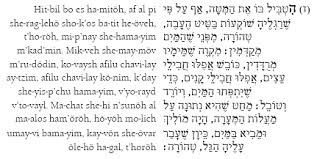The practice of learning Mishnayos during the Shloshim period holds profound spiritual significance within Jewish tradition. Shloshim, the thirty-day mourning period following a burial, is a time when mourners engage in reflection and remembrance of their departed loved ones. The study of Mishnayos during this time serves as an essential tool for both honoring the deceased and providing comfort to those left behind.
Mishnayos, derived from the word “mishnah,” refers to the oral teachings compiled by Rabbi Judah the Prince around 200 CE. These teachings form the foundation of Jewish law and ethics, encapsulating centuries of wisdom passed down through generations. By engaging with these texts during Shloshim, mourners connect with a continuum of Jewish knowledge that transcends temporal boundaries, creating a bridge between past and present.
One reason mishnayos for shloshim is its association with elevating the soul (neshama) of the departed. According to Jewish belief, every mitzvah or good deed performed in memory of someone who has passed away contributes positively to their soul’s journey in the afterlife. Learning Torah is considered one of the highest forms of mitzvot due to its inherent holiness and connection to divine wisdom. Therefore, dedicating time to study Mishnayos can be seen as an act that brings merit and elevation to the neshama.
Moreover, this practice provides solace for mourners by offering structure amidst emotional turmoil. Grieving individuals often seek ways to channel their sorrow into meaningful actions; engaging with sacred texts provides such an outlet while fostering personal growth through introspection on life’s deeper questions posed within these ancient writings.
Furthermore, communal aspects are integral components when learning together becomes part-and-parcel throughout one’s grief journey—sharing insights gleaned from collective study sessions strengthens bonds among family members or community groups supporting each other emotionally throughout difficult times like shiva (the initial seven days post-funeral) followed closely thereafter until completion at day thirty marking end-of-mourning phase known colloquially as “shlishim.
In addition—and perhaps most importantly—the act itself serves not only individual purposes but also reinforces communal solidarity: coming together over shared experiences helps build resilience against future challenges faced collectively alongside newfound understanding gained via exploration into timeless teachings contained therein which ultimately enriches everyone involved spiritually speaking too!
Ultimately then we see how significant role played here goes beyond mere ritualistic observance alone—it represents opportunity reconnect deeply held values embedded within Judaism itself thereby ensuring continuity across generations whilst simultaneously bringing peace unto those seeking it desperately needed moments healing amid loss experienced firsthand today tomorrow always alike!











